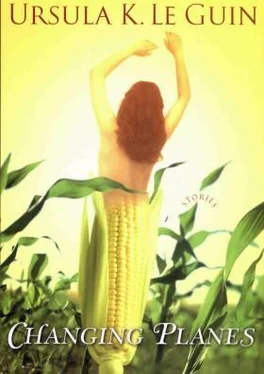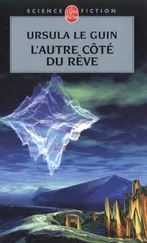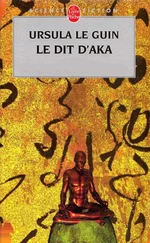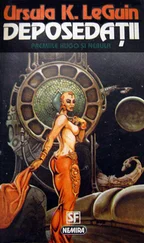This plane can be reached only from certain airports, all of them in the United States, most of them in Texas. At Dallas and Houston there are Holiday Plane Club Lounges for tour groups to this special destination. How they induce the necessary stress and indigestion in these lounges, I do not really want to know.
Nor do I have any wish to visit the plane; but Cousin Sulie has been going there for several years. She was on the way there when she told me about it, and in response to my request she kindly brought me back a whole tote bag full of flyers, brochures, and promotional materials, from which I compiled this description. There is a Web site, though its address seems to change without notice.
Any history of the place has to be mere guesswork. Going by the dates on the brochures, it is not more than ten years old. I imagine a scenario of its origin: a bunch of businessmen are delayed at a Texas airport, and get to talking in that bar where first-class and business-class persons can go but other persons cannot. One of the businessmen suggests they all try out Sita Dulip’s Method. Through inexperience or bravado they find themselves not on one of the popular tourist planes but on one not even listed in Roman’s Handy Guide. And they find it, in their view, virgin: unexplored, undeveloped, a Third World plane just waiting for the wizardry of the entrepreneur, the magic touch of exploitation.
I imagine that the native population was spread out over many small islands and that they were very poor, or fatally hospitable, or both. Evidently they were ready and willing, through innocent hope of gain or love of novelty, to adopt a new way of life. At any rate, ready or not, they learned to do what they were told to do and behave the way they were taught to behave by the Great Joy Corporation.
Great Joy has a kind of Chinese sound to it, but all the promotional literature Cousin Sulie brought me was printed in the United States. The Great Joy Corporation owns the trade-marked name of the plane and issues the PR. Beyond that, I know nothing about Great Joy. I have not tried to investigate it.
It’s no use. There is no information about corporations. There is only disinformation. Even after they collapse, imploding into a cratered ruin stinking of burnt stockholder and surrounded by an impenetrable barrier formed by members of Congress and other government officials holding hands and wearing yellow tape marked Private Property, No Trespassing, Keep Out, No Hunting, Fishing, or Accounting—even then there is no truth in them.
Insofar as one can trust the promotional copy, the world of Great Joy is mostly a warm, shallow ocean dotted with small islands. They look flatter than our volcanic Pacific islands, more like big sandbars. The climate is said to be warm and pleasant. There must be, or must have been, native plants and animals, but there is nothing about them in the advertising. The only trees in the photographs are firs and coconut palms in large pots. There is nothing about the people, either, unless you count references to “the friendly, colorful natives.”
The largest island, or anyhow the one with by far the most elaborate advertising copy, is Christmas Island.
That is where Cousin Sulie goes every time she gets the chance. Since she lives in rural South Carolina and has a daughter in San Diego and a son in Minneapolis, she gets the chance fairly often, so long as she makes sure to change planes at the right places: the major Texas airports, Denver, and Salt Lake City. Her son and daughter expect her to visit them sometime in August, because that’s when she likes to do her Christmas shopping, and again perhaps in early December, when she panics about things she didn’t buy in August.
“I just get right into the spirit just thinking about Christmas Island!” she says. “Oh, it is just such a happy place! And the prices are really just as low as Wal-Mart, and a much better selection.”
Mild and sunny as the climate is said to be, all the windows of the shops and stores in Noёl City, Yuleville, and O Little Town are rimed with frost, the sills heaped with eternal snow, the frames garlanded with fir and holly. Bells ring continuous peals from dozens of spires and steeples. Cousin Sulie says there are no churches under the steeples, only retail space, but the steeples are very picturesque. All the retail spaces and the crowded streets are full of the sound of carols wafting endlessly over the heads of the Christmas shoppers and the natives. The natives in the photographs are dressed in approximately Victorian costume, the men with tailcoats and top hats, the women with crinolines. The boys carry hoops, the girls rag dolls. The natives fill up the spaces in the streets, hurrying merrily about, making sure there are no empty blocks or unbustling squares. They drive sightseers about in horse-drawn carriages and char-a-bancs, sell bunches of mistletoe, and sweep crossings. Cousin Sulie says they always speak to you so nicely. I asked what they said. They say, “Merry Christmas!” or “A fine evening to you!” or “Gahbressa sebberwun!” She was not sure what this last phrase meant, but when she repeated it as she had heard it, I identified it, I think.
It is Christmas Eve all year long on Christmas Island, and all the shops and stores of Noel City and Yuleville, 220 of them according to the brochure, are open 24/7/365.

“Those little tacky Christmas-All-Year-Round-type shops like we have at home,” Sulie says, “they’re just nowhere. I mean to tell you. Why, there’s one store in Noel City that is entirely bags. You know, pretty paper bags? or foil or cellophane? for gifts you haven’t got the time to wrap, or they’re kind of knobbly? So you just pop them in a bag with some ofthat curly foamy-like paper ribbon spilling out, and it is as pretty as it could be and just as good next year, too, if you fold it nice.”
When she has done her shopping and visited the Angels Nook, a sort of chapel where tea is served in the Little Drummer Boy Inn where she stays—the Adeste Fideles Inn, she says, is very nice but just too expensive—Sulie treats herself with a trip to O Little Town. She says O Little Town is “her favorite place in the world.”
If she has time, she goes there by one-horse sleigh, over the Christmas Tree Mile, a road lined with decorated fir trees in large pots and kept covered with artificial snow, the natural variety not being available. Cousin Sulie is vague about the landscape beyond the fir trees. “Oh just sandy, like pine barrens, I guess,” she says, “only no pines. But you should hear those bells just jingling! And do you know that horse always has a bobtail? Just like in the song?”
If her time is limited, she goes from Noel City to O Little Town on the Xmas Xpress, a jet trolley. In O Little Town one must walk, or if unable or disinclined to walk, one may ride the open-sided Santa Trains, operated by elves, which circulate constantly among all the points of interest.
“You can’t get lost,” says Cousin Sulie, “and you know, it’s so safe. Just think of the difference from all that ugliness in the Holy Land? Feeling safe just makes such a difference.”
There are churches as well as steeples in O Little Town; they are replicas of famous sites in Jerusalem, Rome, Guadalupe, Atlanta, and Salt Lake City. Villagers dressed in what my cousin calls “sort of Bible clothes” keep stalls in a lively marketplace selling peppermint canes and ribbon candy, toys, craft items, and souvenirs; children tumble in the dooryards of little cottages; now and then a shepherd drives a small flock of sheep down the street. Just outside the village is what the brochures describe in vibrant and reverential language as the high point of every visit: the Manger.
Читать дальше










